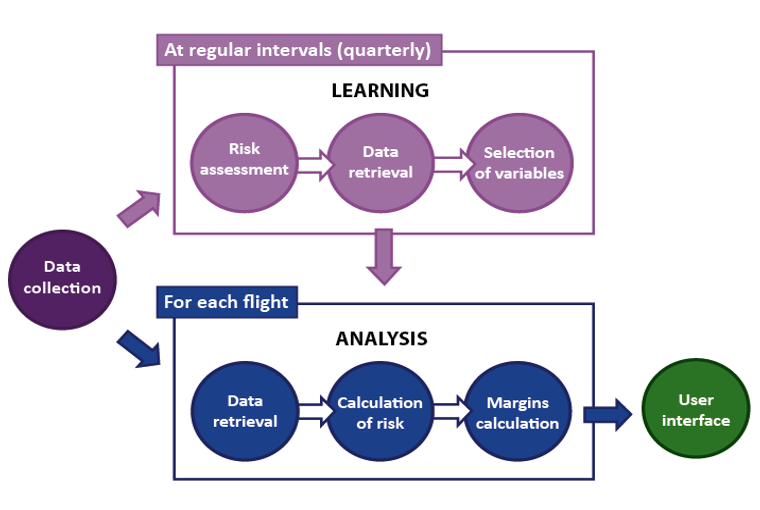SAFETY BEHIND YOUR DATA
About FlightScanner
Flight data is a major source of information on risks. However, with classic analysis tools, no one can browse the millions of pieces of information available. By comparing all flights, our machine learning algorithm will provide you with continuous and accurate measurements of your risks.
FlightScanner is the new standard for compliance and risk monitoring based on flight data. Indeed, new regulations require at least two things:
- Monitor flight data against standard operating procedures. We propose to do it in a much more efficient way than classic FDM. You will be able to modify your thresholds in one click and will have access to extended analysis which could not previously be performed.
- Identify hazards and assess risks. Until now, there has been no system that allowed this. Indeed to find the hazards and connect them to risks, the first thing to do is to measure the risks.

The risks are actually well known, but not systematically monitored. A metric is used for each risk, runway excursion, hard landing, take-off performance, etc. For example, the landing distance for each flight is compared to the actual runway length. Doing so, it is possible to separate flights with long and short landing distances.
The real innovation is that our machine learning algorithms are able to determine what the main parameters are between two information sets. This way, you know airport by airport, fleet by fleet what really affects your operations. And as the learning process is updated on a regular basis, you also discover trends and can really perform safety assurance based on data.
Benefits
Most of the information embedded in flight data remains unused. Flight Data Monitoring is a good way to verify that standards are applied however, it informs only on symptoms and not causes. The enhanced service based on risks actually provides underlying causes and points out the relevant parameters to review. It is, for example, possible to determine the exact value of some parameters above which risks increase.

